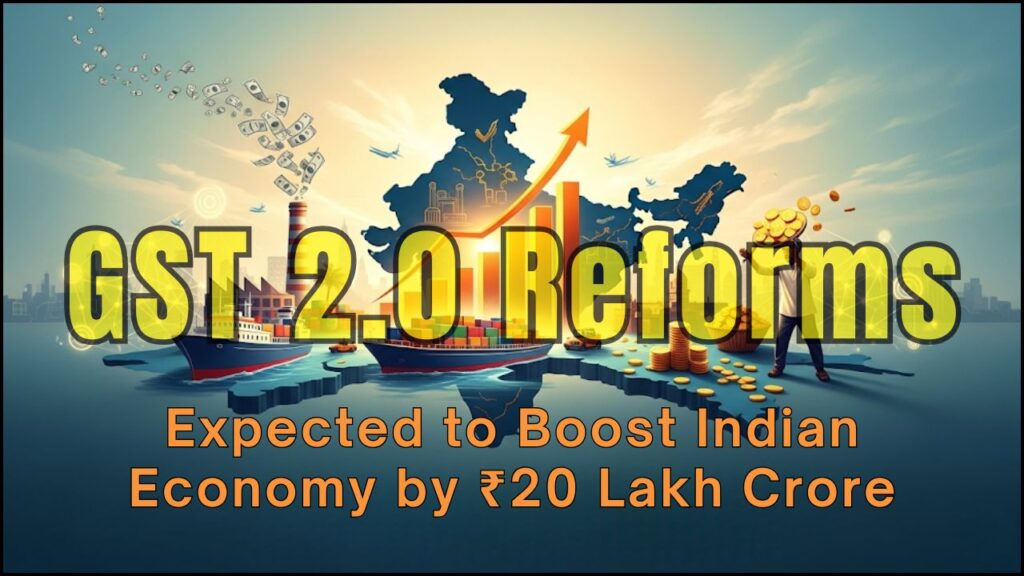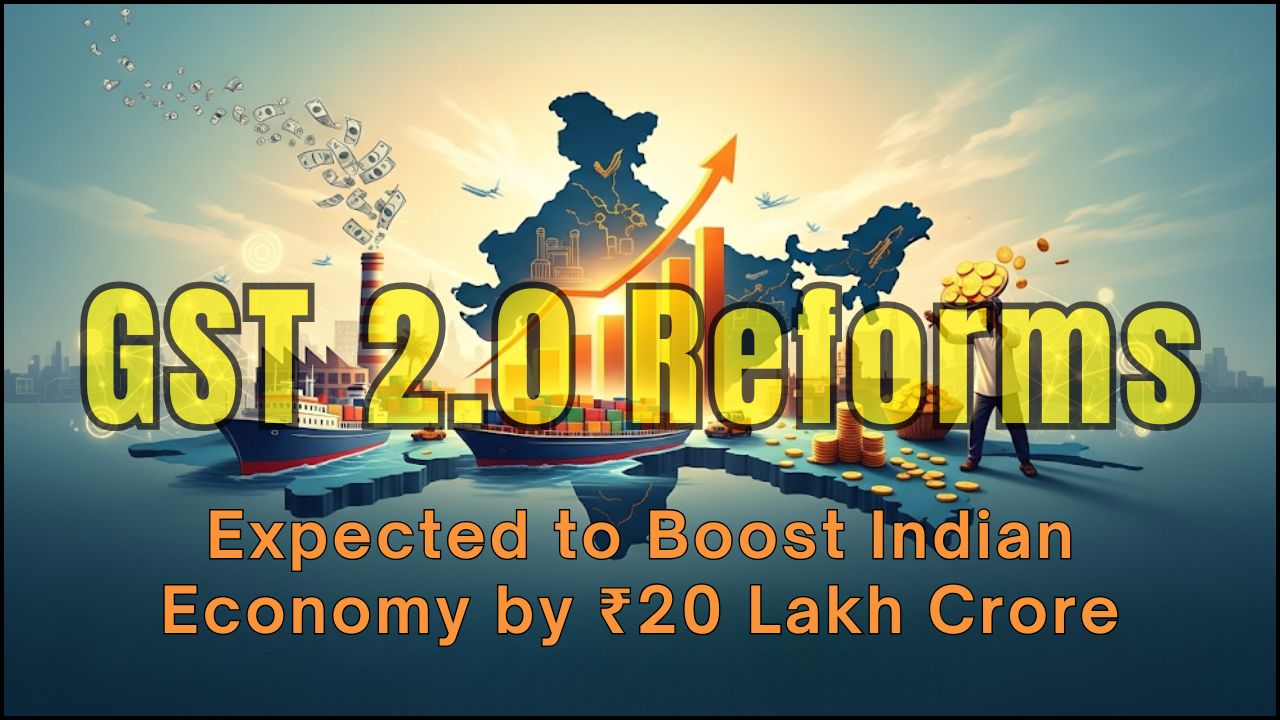
India’s GST 2.0 reforms are expected to deliver a substantial economic boost, with Union Minister Ashwini Vaishnaw projecting an addition of ₹20 lakh crore to GDP. The overhaul, which takes effect on 22 September 2025, seeks to simplify tax rates, increase consumption, and strengthen industry confidence, according to government announcements.
Simplified Structure of GST 2.0
Two-Tier Rate System
The Goods and Services Tax (GST) Council approved the transition from four slabs to a streamlined structure of 5 percent and 18 percent, along with a 40 percent “demerit” rate for luxury and harmful goods such as tobacco. The government said this change would create clarity for consumers and businesses while reducing disputes over classification.
Implementation Timeline
The new system comes into force on Navratri, 22 September 2025, a date chosen to align with India’s peak festive consumption period. Finance Minister Nirmala Sitharaman described the reform as “a major simplification designed to encourage compliance and stimulate demand.”
Expected Economic Impact
Union Minister Vaishnaw said the reform could generate an additional ₹20 lakh crore by raising domestic consumption. “Consumption today accounts for about ₹202 lakh crore of GDP. If affordability improves and consumption rises by 10 percent, that adds nearly ₹20 lakh crore,” he explained in comments reported by the Economic Times.
Economists project that these measures could add 1 to 1.2 percent to GDP growth over the next 12 to 18 months, largely through stronger household spending and reduced inflationary pressures, according to estimates shared in The Daily Brief by Zerodha.
Sector-Wise Benefits
Relief for Households
Several everyday essentials—including soaps, packaged snacks, hair oil, and kitchenware—will now attract lower or zero tax. The Finance Ministry confirmed that many of these items will fall under the 5 percent bracket, while some critical goods are exempt.
Healthcare Gains
The health sector is set to benefit significantly. Thirty-three essential life-saving medicines, including certain cancer and chronic disease treatments, will be exempt from GST. Additionally, health and life insurance premiums are now tax-free, easing costs for families.
Automobiles and Consumer Goods
The automobile industry, often hit by the earlier 28 percent slab, will see vehicles and auto parts taxed at 18 percent. White goods such as air conditioners and televisions will also move into the 18 percent bracket, potentially driving sales ahead of the festive season.
Support for MSMEs
Micro, small, and medium enterprises (MSMEs) have long called for simpler compliance. The new framework introduces faster refunds and more user-friendly digital filing systems, measures the Confederation of Indian Industry (CII) hailed as a “game changer for industry.”
Concerns Over State Revenues
Some states have expressed concern that the elimination of the 12 percent and 28 percent brackets could reduce revenues. However, Chief Economic Adviser V. Anantha Nageswaran said it was premature to conclude there would be losses. He emphasised that states should focus on strengthening their own tax mobilisation capacity.
Market and Investor Response
Financial markets reacted positively to the announcement. Shares of companies in the automobile and consumer goods sectors rose sharply, with Atul Auto gaining over 14 percent following the rate cuts, according to reporting from Economic Times. Broader indices also posted gains, reflecting optimism about stronger domestic demand.
Conclusion
The GST 2.0 reforms represent India’s most significant tax restructuring since GST’s launch in 2017. By simplifying the system, lowering rates on essentials, and targeting growth, the government hopes to encourage consumption and improve compliance. While questions remain about state revenues, early market reactions suggest confidence in the reform’s growth potential.
















